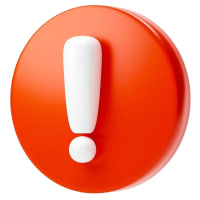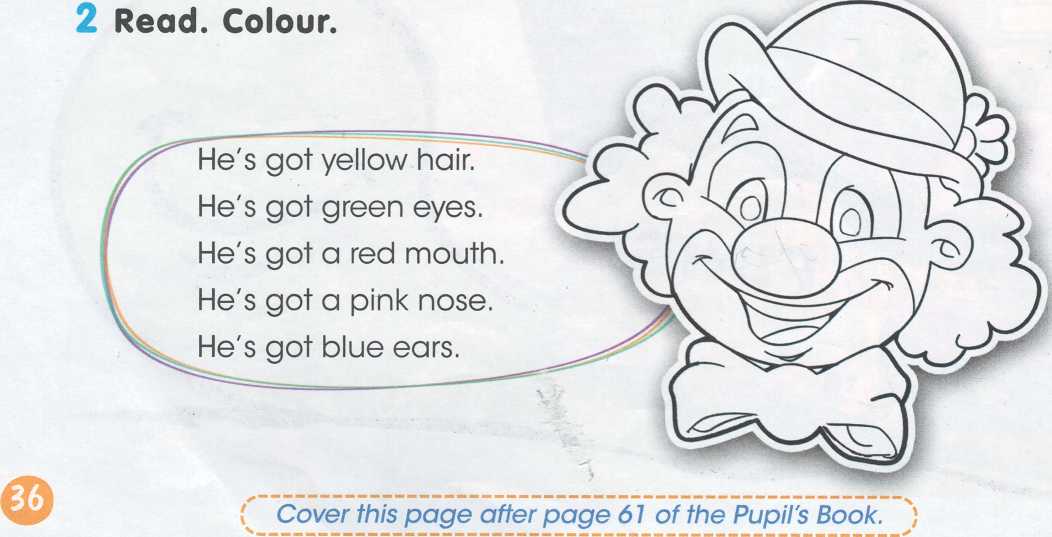
Тексерілді:_________________________
Lesson plan
|
Unit of a long term plan: Unit5. “Health and body” |
Secondary school №42 by named S.Kozhanov |
|||||||||||||||||||||||||||||||||||||||||
|
Date:16.01.2019 |
Teacher name: Alipbaeva M.P |
|||||||||||||||||||||||||||||||||||||||||
|
CLASS: 2 “V” |
Number :present: 6 |
absent: |
||||||||||||||||||||||||||||||||||||||||
|
Lesson title |
Our body |
|||||||||||||||||||||||||||||||||||||||||
|
Learning objectives(s) that this lesson is contributing to (link to the Subject programme) |
2.R1 read and spell out words for others 2.S3 use a limited range of basic words, phrases and short sentences to describe objects, activities and classroom routines 2.L1 understand a range of short basic supported classroom Instructions 2.UE6 use demonstrative pronouns this, these, that, those to make and respond to requests for information |
|||||||||||||||||||||||||||||||||||||||||
|
Lesson objectives |
All learners will be able to:
Most learners will be able to:
Some learners will be able to:
|
|||||||||||||||||||||||||||||||||||||||||
|
Assessment criteria |
Spell out words for others; Read word appropriately; Use adjectives; |
|||||||||||||||||||||||||||||||||||||||||
|
Values links |
Learners will work together with cooperation and being respect with each other; Lifelong learning; |
|||||||||||||||||||||||||||||||||||||||||
|
Cross-curricular links |
Outlook; |
|||||||||||||||||||||||||||||||||||||||||
|
ICT skills |
Smart board, using videos, pupil’s book, activity book, blackboard, flash cards, notebook. |
|||||||||||||||||||||||||||||||||||||||||
|
Previous learning |
Unit 5. Health and body. |
|||||||||||||||||||||||||||||||||||||||||
|
Plan |
||||||||||||||||||||||||||||||||||||||||||
|
Planned timings |
Planned activities (replace the notes below with your planned activities)
|
Resources |
||||||||||||||||||||||||||||||||||||||||
|
Start 2 min 3min 2min 1min 4min |
Pre-reading Teacher and learners greets with each other. Warm Up We can see with our…(eyes) We can eat with our…(mouth) We can smell with our…(nose) We can hear with our…(ears) Checking home work Teacher shows the picture of Teddy (bear) and students quickly revise his painted parts of body. Dividing the groups T
Presenting vocabulary Teacher introduces new greeting vocabulary. Teacher offers learners to watch a video “Body-parts of the body”. Following the video learners repeat in chorus. The list of new words includes the following: Head, eyes, ears, mouth, nose, shoulder, hand, knees, leg, tongue, stomach… |
Giving warm smiles
Work with board
Pupil’s book Smiles2 on page 60
Shapes Video “Body parts” English singsing. |
||||||||||||||||||||||||||||||||||||||||
|
Middle 8min
10min
5min
|
Teacher orally praises learner’s activity.
"Quick Check" game Teacher clarifies the instruction of the game. Learners do the teacher’s instruction. Teacher gives for each student 4 different cards. They are eyes, ears, nose and mouth. When teacher say one part of the body, students need quickly show this card. If the student make mistakes he/she came out to the game. “Touch and move” Everyone in class touch their parts of body with teacher indication. At firstly they touch own parts of the body then they touch friend’s body “Matching activity” After those learners do group work task from handout worksheets. Learners match the words with pictures and each group read the words. Then each group assesses by
fingers their work. Teacher goes around the
class, monitors and assists if necessary. Finishing the task
teacher gives learners
“praising
stickers” for their
work.
“Listen and do” Learners listen merry song and do teachers instruction. They are dancing in pairs. When teacher say hand to hand, students must listen music and touch each others hand(hand to hand, back to back, leg to leg, head to head, shoulder to shoulder). |
Flashcards with picture eyes, ears, mouth and nose. Activity Book Smiles2 on page36 ex:1,2. 2 worksheets Dancing and revising parts of body |
||||||||||||||||||||||||||||||||||||||||
|
End 5min |
Feedback Learners give their feedback liked or disliked the lesson by signal cards of thumbs up or down. Giving homework: exercise 3 on page 37from activity book. |
Signal cards
|
||||||||||||||||||||||||||||||||||||||||
|
Additional information |
||||||||||||||||||||||||||||||||||||||||||
|
Differentiation – how do you plan to give more support? How do you plan to challenge the more able learners? |
Assessment – how are you planning to check learners’
learning? |
Health and safety
check
|
||||||||||||||||||||||||||||||||||||||||
|
Less able students – greater support by means of prompts. More able students – independent work on definite tasks with little/no support. |
- By means of oral formative assessment - Monitoring - Checking the task - Feedback on the work - Learners work in pairs, Whole and individually. |
Monitor classroom space when students start moving around
|
||||||||||||||||||||||||||||||||||||||||
|
Reflection Were the lesson objectives/learning objectives realistic? Did all learners achieve the LO? If not, why? Did my planned differentiation work well? Did I stick to timings? What changes did I make from my plan and why? |
Use the space below to reflect on your lesson. Answer the most relevant questions from the box on the left about your lesson. |
|||||||||||||||||||||||||||||||||||||||||
|
|
||||||||||||||||||||||||||||||||||||||||||
|
Summary evaluation
What two things went really well (consider both teaching and learning)?
1:
2:
What two things would have improved the lesson (consider both teaching and learning)?
1:
2:
What have I learned from this lesson about the class orindividuals that will inform my next lesson?
|
||||||||||||||||||||||||||||||||||||||||||
жүктеу мүмкіндігіне ие боласыз
Бұл материал сайт қолданушысы жариялаған. Материалдың ішінде жазылған барлық ақпаратқа жауапкершілікті жариялаған қолданушы жауап береді. Ұстаз тілегі тек ақпаратты таратуға қолдау көрсетеді. Егер материал сіздің авторлық құқығыңызды бұзған болса немесе басқа да себептермен сайттан өшіру керек деп ойласаңыз осында жазыңыз
Ашық сабақ "Our body" 2 сынып
Ашық сабақ "Our body" 2 сынып
Тексерілді:_________________________
Lesson plan
|
Unit of a long term plan: Unit5. “Health and body” |
Secondary school №42 by named S.Kozhanov |
|||||||||||||||||||||||||||||||||||||||||
|
Date:16.01.2019 |
Teacher name: Alipbaeva M.P |
|||||||||||||||||||||||||||||||||||||||||
|
CLASS: 2 “V” |
Number :present: 6 |
absent: |
||||||||||||||||||||||||||||||||||||||||
|
Lesson title |
Our body |
|||||||||||||||||||||||||||||||||||||||||
|
Learning objectives(s) that this lesson is contributing to (link to the Subject programme) |
2.R1 read and spell out words for others 2.S3 use a limited range of basic words, phrases and short sentences to describe objects, activities and classroom routines 2.L1 understand a range of short basic supported classroom Instructions 2.UE6 use demonstrative pronouns this, these, that, those to make and respond to requests for information |
|||||||||||||||||||||||||||||||||||||||||
|
Lesson objectives |
All learners will be able to:
Most learners will be able to:
Some learners will be able to:
|
|||||||||||||||||||||||||||||||||||||||||
|
Assessment criteria |
Spell out words for others; Read word appropriately; Use adjectives; |
|||||||||||||||||||||||||||||||||||||||||
|
Values links |
Learners will work together with cooperation and being respect with each other; Lifelong learning; |
|||||||||||||||||||||||||||||||||||||||||
|
Cross-curricular links |
Outlook; |
|||||||||||||||||||||||||||||||||||||||||
|
ICT skills |
Smart board, using videos, pupil’s book, activity book, blackboard, flash cards, notebook. |
|||||||||||||||||||||||||||||||||||||||||
|
Previous learning |
Unit 5. Health and body. |
|||||||||||||||||||||||||||||||||||||||||
|
Plan |
||||||||||||||||||||||||||||||||||||||||||
|
Planned timings |
Planned activities (replace the notes below with your planned activities)
|
Resources |
||||||||||||||||||||||||||||||||||||||||
|
Start 2 min 3min 2min 1min 4min |
Pre-reading Teacher and learners greets with each other. Warm Up We can see with our…(eyes) We can eat with our…(mouth) We can smell with our…(nose) We can hear with our…(ears) Checking home work Teacher shows the picture of Teddy (bear) and students quickly revise his painted parts of body. Dividing the groups T
Presenting vocabulary Teacher introduces new greeting vocabulary. Teacher offers learners to watch a video “Body-parts of the body”. Following the video learners repeat in chorus. The list of new words includes the following: Head, eyes, ears, mouth, nose, shoulder, hand, knees, leg, tongue, stomach… |
Giving warm smiles
Work with board
Pupil’s book Smiles2 on page 60
Shapes Video “Body parts” English singsing. |
||||||||||||||||||||||||||||||||||||||||
|
Middle 8min
10min
5min
|
Teacher orally praises learner’s activity.
"Quick Check" game Teacher clarifies the instruction of the game. Learners do the teacher’s instruction. Teacher gives for each student 4 different cards. They are eyes, ears, nose and mouth. When teacher say one part of the body, students need quickly show this card. If the student make mistakes he/she came out to the game. “Touch and move” Everyone in class touch their parts of body with teacher indication. At firstly they touch own parts of the body then they touch friend’s body “Matching activity” After those learners do group work task from handout worksheets. Learners match the words with pictures and each group read the words. Then each group assesses by
fingers their work. Teacher goes around the
class, monitors and assists if necessary. Finishing the task
teacher gives learners
“praising
stickers” for their
work.
“Listen and do” Learners listen merry song and do teachers instruction. They are dancing in pairs. When teacher say hand to hand, students must listen music and touch each others hand(hand to hand, back to back, leg to leg, head to head, shoulder to shoulder). |
Flashcards with picture eyes, ears, mouth and nose. Activity Book Smiles2 on page36 ex:1,2. 2 worksheets Dancing and revising parts of body |
||||||||||||||||||||||||||||||||||||||||
|
End 5min |
Feedback Learners give their feedback liked or disliked the lesson by signal cards of thumbs up or down. Giving homework: exercise 3 on page 37from activity book. |
Signal cards
|
||||||||||||||||||||||||||||||||||||||||
|
Additional information |
||||||||||||||||||||||||||||||||||||||||||
|
Differentiation – how do you plan to give more support? How do you plan to challenge the more able learners? |
Assessment – how are you planning to check learners’
learning? |
Health and safety
check
|
||||||||||||||||||||||||||||||||||||||||
|
Less able students – greater support by means of prompts. More able students – independent work on definite tasks with little/no support. |
- By means of oral formative assessment - Monitoring - Checking the task - Feedback on the work - Learners work in pairs, Whole and individually. |
Monitor classroom space when students start moving around
|
||||||||||||||||||||||||||||||||||||||||
|
Reflection Were the lesson objectives/learning objectives realistic? Did all learners achieve the LO? If not, why? Did my planned differentiation work well? Did I stick to timings? What changes did I make from my plan and why? |
Use the space below to reflect on your lesson. Answer the most relevant questions from the box on the left about your lesson. |
|||||||||||||||||||||||||||||||||||||||||
|
|
||||||||||||||||||||||||||||||||||||||||||
|
Summary evaluation
What two things went really well (consider both teaching and learning)?
1:
2:
What two things would have improved the lesson (consider both teaching and learning)?
1:
2:
What have I learned from this lesson about the class orindividuals that will inform my next lesson?
|
||||||||||||||||||||||||||||||||||||||||||

шағым қалдыра аласыз

















